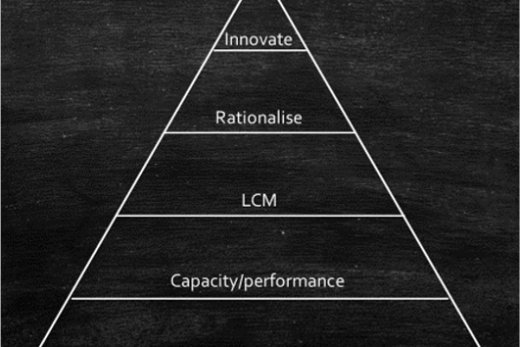“Before you help others, always help yourself first”. “True beauty comes from within”. “To love others, you must first love yourself”. These cheesy clichés, all sound very selfish but they share a common ground that is far from selfish. You can only truly help others at your best ability when you are not distracted by personal issues or internal frustrations. You must always first face your own trouble in order to be free to help others.
This principle not only applies for individuals but also applies for every company and organization. Off course, a company can help its customers well even when the company is a mess internally. However, a company can only truly help their customers in the best possible way and in the long run when the employees of that company have no internal frustrations and the organization is as healthy as can be at all aspects.
Colleague Promotor Score
Many organizations realize that employee happiness is key to delivering good products and services. In this sense, happiness is the common denominator that includes many motivational aspects such as engagement, moral, joy etc. Therefor, many companies address this with a variety of improvement programs. Most of these health- and well-being programs however focus on the individual, which is a good thing. The interaction between employees, that need each other in order to do their daily work, however is not often included. Even more, it is unlikely that organizations use metrics to measure the quality of interaction or collaboration. This is where CPS comes in.
Obviously, the Colleague Promotor Score (or CPS) is derived from the commonly known NPS (net promoter score). The NPS has been a widely accepted method for years to measure customer satisfaction by, in a nutshell, measuring the willingness at which a customer would promote the product or service to friends or family. However, sometimes I get the feeling that NPS makes us focus on the customer too much, neglecting our internal organization and the interaction between employees. I believe that if we focus on our internal quality, processes and happiness that it will eventually reflect on our customers.
NPS is often an indication of the quality of the products or services you deliver. It measures the output. In contrast, CPS is an indication of the quality of the employees and their process of how those products and services are delivered and thus an indication of the quality of collaboration. It measures the input. Poor collaboration results in lower quality products for higher costs and longer time to market. All internal processes, structures and policies should be facilitating the employees in doing their job better, faster or cheaper, whether it is new product development, operations, fulfillment or any other area.
Recommend each other as valuable colleague
There is no single best NPS-question but they often look somewhat like, How likely are you to recommend product X to friends or family on a scale of 0-10? For CPS there isn’t a best question either. In the CPS, you are the product or service that others could recommend. As suitable question could therefore be: “How likely are you to recommend me as a valuable colleague on a scale of 0-10?”
If your company is facing causing unhappy customers, do not merely focus outside on the customers. Look inside, find out what is frustrating your people in their daily work and the collaboration between each other and remove all hurdles they face. If done properly, the organization will improve dramatically, and your customers will have no choice but to love the effect on the product or service and they will definitely become a fan.




Recent Comments